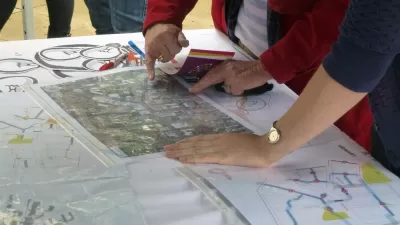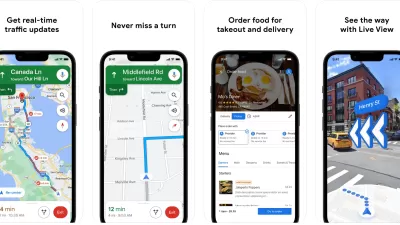With the constellation of civic technologies, like online community engagement platforms, growing quickly, it's important to recognize the positive and negative consequences of new practices in community engagement.

Civic tech, and particularly online community engagement, has grown dramatically over the past few years. For years the field was in it's infancy with only a few players and early adopters experimenting with new approaches. We're now in the teenage years, with rapid growth in the number of vendors and agencies taking the leap. As every teenager knows, every growth spurt comes with both positives and negatives, and today's world of online community engagement has its share of both.
The Positive
1. A Maturing Field of Vendors
In the early days a great deal of online engagement tools were not yet fully developed platforms. Most of them were developed for one particular project and then an attempt was made to commercialize the technology to offer the same functionality to other projects. This product development pathway often resulted in products not designed for the needs of the broader market, making it time-consuming and labor intensive to customize for new projects. Nearly all of these early platforms, if they are still around, have matured into fully templated products that can be configured quickly to meet the needs of new projects. The newest platforms, for the most part, have been designed from the ground up with the latest "software as a service" capabilities.
2. Costs Coming Down
Partly as a result of the maturing of the software-as-a-service platforms offered and partly as a result of increasing competition in the market, prices have come down dramatically and are now within reach of even the smallest communities. This shift is opening up the market to a much large number of clients, many of whom have little experience working with these technologies. What is needed now more than ever are educational sessions demystifying and providing best practices and guidance on online engagement. Groups like IAP2, NCDD, and Planetizen Courses are helping and even more is needed.
3. Technology and Expectations Are Driving Uptake
According to Internet Live Stats, internet connectivity has risen to 88.5 percent in 2016 in the United States and Canada. This rise over the past five years, along with the penetration of smartphones, has been dramatic. While some critical populations are still left out, there is no denying that online engagement is a critical channel to broaden the reach of community engagement. It's easy to see how much of people's attention is now directed towards their devices so the importance of this engagement channel is clear. Given the cost effectiveness of many of the online tools, agencies are now able to engage an increasingly broad audience online and save some of the "boots on the ground" effort to target the underrepresented demographic community members.
The Negative
1. Over Promising and Under Delivering
The nature of start-ups and the pressure of their investors can create some unhealthy tensions. Tech start-ups often germinate with a great deal of passion around a new idea, a hasty business plan showing dramatic growth projections and high hopes of winning the attention of investors. The start-ups that do attract investment are often under a great deal of pressure to rush a solution to market and grow aggressively. This dynamic can introduce a great deal of confusion into the marketplace for clients. Since these technologies are new, it's not yet clear how they will perform in the real world or what niche they will fill. Vendors, under pressure from investors, can be overzealous and create unrealistic expectations in order to secure early growth. If expectation are not met, agencies, particularly ones that are new to online engagement, can become disenchanted with online engagement in general, painting the entire industry with the same brush. The wisest and most savvy agencies realize that a suite of tools is needed. Despite marketing messages to the contrary, there is no one tool that will meet all of your community engagement needs. Take the time to look past the brochures, probe deeper and speak to other agencies whenever possible. If you are willing to be an early adopter of a new and somewhat untested technology, do so with a spirit of experimentation.
2. Large Projects Getting the Press
Planning conferences are filled with sessions highlighting case studies that have successfully leveraged online engagement. It’s great for people to share success stories and it's very helpful when they talk about lessons learned and best practices that can be applied elsewhere. The problem lies in the types of projects that win time at the podium. Here's a recent example: At the APA National Planning Conference in Phoenix, the city of Henderson took home the 2016 National Planning Excellence Award for Public Outreach. They had a great deal of success with online engagement and used a broad mix of other tactics as well. One of the first things you'll hear in the award video describing the project is “funded by a $3.5 million grant…" I can imagine how disconcerting this must sound for other communities trying to increase the effectiveness of public involvement on meager budgets. If we primarily hear about major projects with big budgets, it's easy to reach the conclusion that online engagement is reserved for those kinds of efforts. There are plenty of small projects that have had great success using online tools as a cost effective way to broaden the engagement but we seldom see them represented on the podium.
3. Out With the Old, In With the New
Online engagement tools are too often presented as solutions to replace outdated face-to-face engagement strategies. This may be due to overzealous marketing or simply a misinterpretation that happens when vendors try to boil their value proposition down to punchy bullet points. The result can be quite detrimental to the field in general. Firstly, as a practitioner in the field of online engagement, I'll be the first to admit that no online tool has ever come close to replicating the rich interchange that can happen when community members and project leaders meet face to face. It's foolish to suggest that one replaces the other. Secondly, many of the best potential advocates of online engagement are public engagement professionals who make some or all of their living planning and facilitating face to face events. To suggest that the value that they add is being replaced by a technology will only serve to alienate them. These savvy folks are keenly aware of the fallacy in this notion yet also aware how beneficial online engagement can be when woven smartly into a multi-pronged engagement strategy.
I'm optimistic. The online engagement field is seeing positive progress on many fronts. The infusion of new creative energy, investment and experiments that are happening all over the continent are great sources of learning. To the many communities who are weighing into this territory with caution, I wish you nothing but success. There's a great deal of choice available and I know it can be confusing. The best advice I can offer is this: the more clearly you can state your goals and objectives before you go searching, the better prepared you will be to evaluate the capabilities of competing options to meet your needs.

Alabama: Trump Terminates Settlements for Black Communities Harmed By Raw Sewage
Trump deemed the landmark civil rights agreement “illegal DEI and environmental justice policy.”

Planetizen Federal Action Tracker
A weekly monitor of how Trump’s orders and actions are impacting planners and planning in America.

Why Should We Subsidize Public Transportation?
Many public transit agencies face financial stress due to rising costs, declining fare revenue, and declining subsidies. Transit advocates must provide a strong business case for increasing public transit funding.

Understanding Road Diets
An explainer from Momentum highlights the advantages of reducing vehicle lanes in favor of more bike, transit, and pedestrian infrastructure.

New California Law Regulates Warehouse Pollution
A new law tightens building and emissions regulations for large distribution warehouses to mitigate air pollution and traffic in surrounding communities.

Phoenix Announces Opening Date for Light Rail Extension
The South Central extension will connect South Phoenix to downtown and other major hubs starting on June 7.
Urban Design for Planners 1: Software Tools
This six-course series explores essential urban design concepts using open source software and equips planners with the tools they need to participate fully in the urban design process.
Planning for Universal Design
Learn the tools for implementing Universal Design in planning regulations.
Caltrans
Smith Gee Studio
Institute for Housing and Urban Development Studies (IHS)
City of Grandview
Harvard GSD Executive Education
Toledo-Lucas County Plan Commissions
Salt Lake City
NYU Wagner Graduate School of Public Service






























